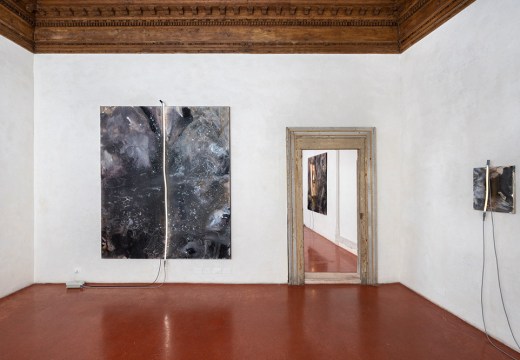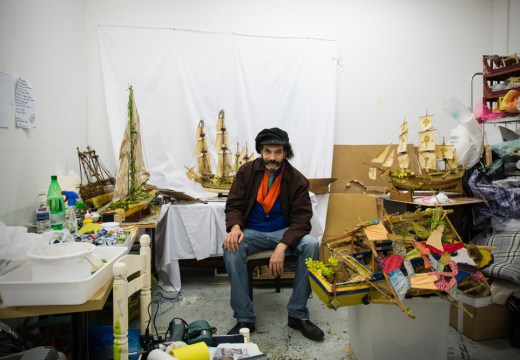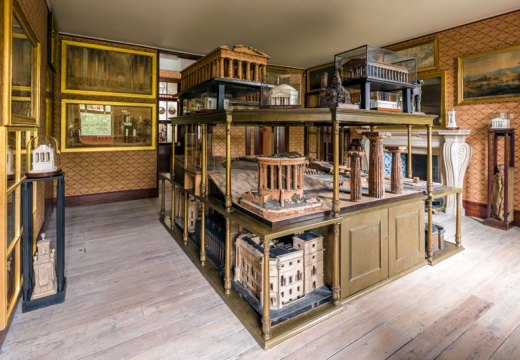From the March 2023 issue of Apollo. Preview and subscribe here.
The juxtaposition of contemporary and historic art has become increasingly common. The practice has come in for some derision, not least by Nicholas Penny, former director of the National Gallery, who wrote in the LRB last year of the ‘welcome change’ represented by the Carlo Crivelli exhibition at Ikon Gallery in Birmingham. If it was hard to pinpoint exactly what he welcomed – although it was abundantly clear that he was no fan of ‘interventions’ by contemporary artists in historic collections – his article may mark the high tide of a generational trend. It certainly begs some questions.
Many projects by artists in historical spaces are not so much interventions as parallel discourses which help to illuminate – in ways which range from the art historical to the functional, aesthetic or political – the collections they accompany. I could cite projects by Dexter Dalwood, Tobias Rehberger and Patrick Keiller – but perhaps one of the most impressive examples of such ‘joint enterprise’ is also one of the earliest. In 1993, artists including Jenny Holzer, Donald Judd and Heimo Zobernig were invited to rehang the collections of the Museum of Applied Arts in Vienna. Not all of the subsequent projects at MAK have been so successful, but all have set out as equal partnerships in which the museum extends full responsibility to the artist. (That is, these projects work because they are less of an ‘intervention’ and more of a collaboration.)
Until the radical rethinking of art school education after the Second World War there was little real sense of rupture in the flow of the visual arts. Notwithstanding the exhortations of modernist artists to ‘make it new’, it was accepted that new generations would learn from previous generations; art academies were placed next to art museums to aid that transmission. But from the 1950s, new art was increasingly made on its own terms and shown in its own spaces. If those spaces began by being predominantly modernist, they were also increasingly informed by the industrial architecture of the studios where the art was made, and so conversions of new museums used and echoed that vocabulary. By the 1980s, contemporary art was often shown in old spaces, but not alongside old art. Repurposed factories, like those at Schaffhausen, Marfa or Halifax, helped to define the choice of the Bankside Powerstation as the new home of contemporary (and modern) art. The contemporary art of that period was very often made for and depended on the very air of such ‘legacy’ spaces.
It is unfortunately true that, as placing contemporary art among historic art has become more than an occasional practice, it has inevitably become more uneven. Seeing Siobhán Hapaska’s sculptures among the 18th-century Irish paintings of the National Gallery of Ireland, or Bill Viola in St Paul’s Cathedral, is jarring. Such juxtapositions defend the idea of continuity when little is to be seen. Rather, Hapaska is there simply because she is Irish, and Viola because his motif is religious. Aesthetic affinity is absent.
Even when a museum invites artists to make new work on their own terms – as with the Capodimonte’s series, currently featuring Flavio Favelli – there is always the risk that the results will appear slight in its surroundings. Such invitations may bring a different (and more local) crowd to the museum, but do they open our eyes, in either direction?
Other historic environments, such as Sir John Soane’s Museum, have used contemporary art more successfully because they are freer; Soane’s house is a place which transcends the constraints of national schools and pictorial tradition. A similar kind of freedom is provided by the Kolumba Museum in Cologne where Bethan Huws, among others, has responded sensitively to the diocesan collection housed in Peter Zumthor’s building. Spaces like this enable visitors to forget about the act of intervention and instead focus on the effect.

Installation view of The Procession (2022) by Hew Locke. Photo: Joe Humprhys; © Tate photography
Favelli was invited down to Naples to make an ‘intervention’, as Penny would term it. This was an honour – who would refuse? – but it was not a development of an existing relationship. It can be far more promising to explore the ways in which artists makes use of their local collections. Where artistic interest is habitual, even addictive, concrete links are there to be uncovered. I found my time working at the Tate particularly rewarding in this sense, because it was easy to learn of these links from the artists themselves. Hew Locke’s recent The Procession in the Duveen Galleries was made by an artist who sees the Tate as his local. His relaxed approach reflects that of artists more generally, now working in the wake of ‘institutional critique’, when they were expected to be genuinely interventionist by overtly disrupting the museums in which they were invited to work.
Contemporary artists visit (and use) historic collections more than most contemporary curators. Trying to make visible the naturalness of this link – to emphasise that it is by no means an artificial ‘intervention’ – is something that has frequently concerned me as a curator. After I learned from the Portuguese artist Jorge Queiroz about his daily visits to the Metropolitan Museum of Art, I asked him to work at (and with) the Gulbenkian (where I was director 2015–20). Queiroz’s understanding of pictorial language helped us to look with new eyes at the paintings by Arshile Gorky to which he chose to respond; you could actually feel the relationship working. Other projects with which I was involved drew on the width of Calouste Gulbenkian’s collection, which ranges well beyond painting. The Swiss painter Helmut Federle has amassed an extensive collection of ceramics; he was invited to stage an exhibition that explored his own collecting in parallel with that of Gulbenkian’s. Invitations to Praneet Soi and Mekhitar Garabedian allowed these artists to develop their interests in crafts (tiles and carpets) and pattern-making. Certain techniques of making have remained current for millennia – for instance, casting, the focus of the exhibition ‘Infinite Sculptures’ staged by the Beaux-Arts de Paris and the Gulbenkian in 2019–20. These make for a genuine and equal conversation between historical and contemporary practitioners.

Installation view of the Infinite Sculpture: From the Antique Cast to the 3D Scan exhibition at the Museu Calouste Gulbenkian, Lisbon. Photo: Ricardo Oliveira Alves
I first became involved in placing contemporary among historical art in the Bowes Museum in 1996, when Veit Görner and I chose German and British artists for its different galleries. At that time the notion was sufficiently new not to invite comparison. Since 1996, as Penny notes, ‘a quarter of a century’ has gone by, which he characterises as one of ‘intrusive interventions by contemporary artists in major collections’. The trend is ageing and has become hackneyed, it is true. But it is unfair to blame artists. In an age when fewer curators have studied art history, we need artists to act as a conduit between old and new – to show us that continuities do exist.
From the March 2023 issue of Apollo. Preview and subscribe here.
Unlimited access from just $16 every 3 months
Subscribe to get unlimited and exclusive access to the top art stories, interviews and exhibition reviews.














![Masterpiece [Re]discovery 2022. Photo: Ben Fisher Photography, courtesy of Masterpiece London](http://www.apollo-magazine.com/wp-content/uploads/2022/07/MPL2022_4263.jpg)
Has the Fitzwilliam lost the hang of things?